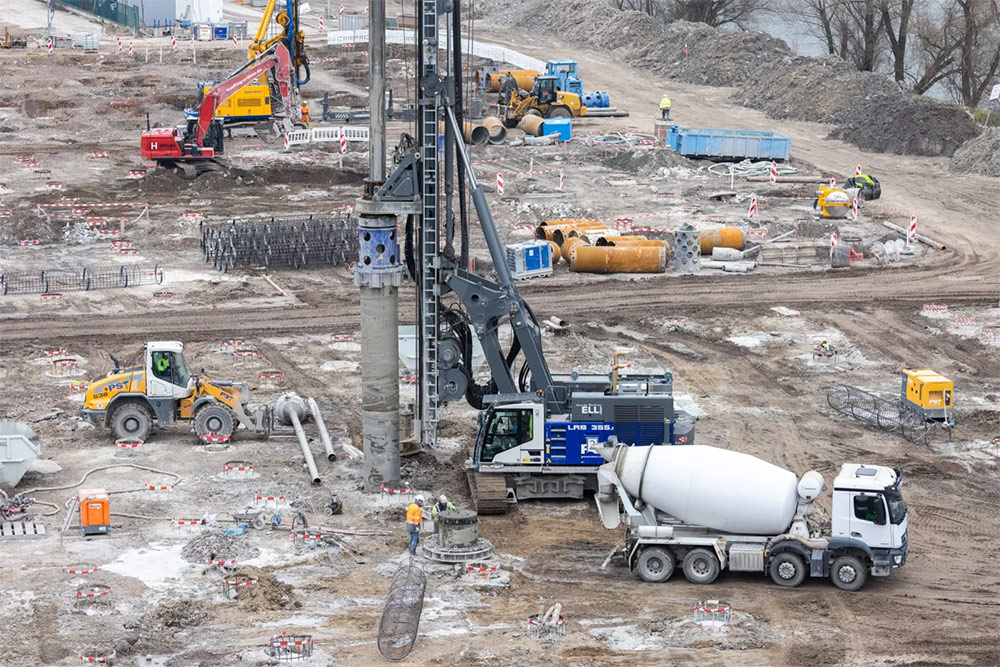企业囤积芯片,却没有足够的数据中心来提供托管服务

科技领域的成功一度取决于速度,即快速行动、打破常规,并在此过程中不断学习。速度仍然很重要,那些迟迟不投入的人很快就会被淘汰。然而,在实现人工智能潜力的竞赛中,这种方法可能行不通。
消费者采用人工智能的炒作和速度是前所未有的。2006年,推特(Twitter)用了近两年时间才达到100万用户。2010年,Instagram用了两个半月。而ChatGPT仅用了五天时间,在两个月内用户数量就突破了1亿。
人工智能热潮也在颠覆科技行业较为平静的角落。目前,全球有超过4万家公司正在使用英伟达(NVIDIA)的芯片进行人工智能和加速计算,而购买芯片的等待时间长达52周。随着AMD和英特尔(Intel)将推出与之展开竞争的硬件,微软(Microsoft)和谷歌(Google)也宣布今年将在基础设施领域投资数十亿美元,开发人工智能产品的竞赛正在发生转变。焦点已经从“能做什么”转移到“如何去做”。
这种“现在购买人工智能,以后再研究是否可行”的模式正是可能会危及人工智能创新可持续性的思维模式。我们遇到了供需问题,而这不仅仅是芯片生产的瓶颈,还是支持硬件所需的基础设施的设计和开发方面的问题。我们在未对管道进行投资的情况下打开了水龙头。如果没有对管道进行投资,人工智能行业就面临陷入错误开端的风险,可能会使其倒退数年。
市场正在形成
数据中心是“如何去做”的关键,在过去十年的许多技术炒作周期中也是如此。简而言之,数据中心的数量不足以满足为生成式人工智能提供动力的要求,而芯片的销售规模也表明了这一点。我们正在进入一个高性能计算的时代,而基础设施还没有到位来承载算力规模。这就是供应问题的症结所在。人工智能前景令人振奋的地方在于它具有无限的可能性。然而,即使硬件供应有所改善,必要基础设施的匮乏也会限制发展。
如今,建造新数据中心的开发周期为三到五年,在某些情况下甚至更长。那些进入人工智能市场的企业如果认为它们所需的基础设施是现成的,那现实情况会让它们感到震惊。北美大部分预计将于2024年上线的数据中心供应已经提前发布,或者已经处于排他性状态。
Epoch AI的研究人员估计,人工智能的算力每6到10个月就会翻一番。尽管数据中心建设不断扩大,但如何满足这一需求水平正成为一个全球性问题。仅在欧洲,到2025年,数据中心的管道需要增加一倍以上,才能满足预测的需求。人工智能经济的基础设施层对其成功至关重要。只有那些能够确保实现访问或进行相应投资的企业才能生存下来,更不必提及获得优势了。
寿命未定
数据中心运营商已经将价格提高了30%,而且这一价格还将继续攀升。虽然少数公司有足够的资金来应对这一涨幅,并正在进行投资,但许多规模较小的公司将发现,以他们能承受的价格找到空间和电力是一项挑战。因此,在大多数人有机会进行实验、迭代、学习或做出积极改变之前,我们就面临着市场整合。
在这方面,人工智能可以从数字资产领域得到启发。随着资产需求的增加,满足需求的承载能力受到越来越多挑战的影响,而这些挑战在一开始并不明显。加密货币及其生态系统通过保持敏捷的方法,在很大程度上克服了这些问题,例如,通过深入了解运营和能源效率的重要性,以及优化硬件以确保使用寿命和成本效益。
大型科技公司正在投资数十亿美元寻求掌握人工智能发展的控制权,而且行动迅速。这种模式我们以前都见过。但这种模式是否应该重来?虽然机会是真实存在的(普华永道预测,到2030年,全球经济将增长超过30万亿美元),但如何实现它将决定人工智能市场的健康和寿命。
尽管雄心勃勃,但人工智能的潜力取决于支持它所需的基础设施承载能力。人工智能前景未定,我们现在面临着一个抉择:是快速行动,打破现状,还是为未来而进行建设。(财富中文网)
阿罗什·蒂莱纳坦(Aroosh Thillainathan)是Northern Data Group的首席执行官兼管理委员会主席。
译者:中慧言-王芳
科技领域的成功一度取决于速度,即快速行动、打破常规,并在此过程中不断学习。速度仍然很重要,那些迟迟不投入的人很快就会被淘汰。然而,在实现人工智能潜力的竞赛中,这种方法可能行不通。
消费者采用人工智能的炒作和速度是前所未有的。2006年,推特(Twitter)用了近两年时间才达到100万用户。2010年,Instagram用了两个半月。而ChatGPT仅用了五天时间,在两个月内用户数量就突破了1亿。
人工智能热潮也在颠覆科技行业较为平静的角落。目前,全球有超过4万家公司正在使用英伟达(NVIDIA)的芯片进行人工智能和加速计算,而购买芯片的等待时间长达52周。随着AMD和英特尔(Intel)将推出与之展开竞争的硬件,微软(Microsoft)和谷歌(Google)也宣布今年将在基础设施领域投资数十亿美元,开发人工智能产品的竞赛正在发生转变。焦点已经从“能做什么”转移到“如何去做”。
这种“现在购买人工智能,以后再研究是否可行”的模式正是可能会危及人工智能创新可持续性的思维模式。我们遇到了供需问题,而这不仅仅是芯片生产的瓶颈,还是支持硬件所需的基础设施的设计和开发方面的问题。我们在未对管道进行投资的情况下打开了水龙头。如果没有对管道进行投资,人工智能行业就面临陷入错误开端的风险,可能会使其倒退数年。
市场正在形成
数据中心是“如何去做”的关键,在过去十年的许多技术炒作周期中也是如此。简而言之,数据中心的数量不足以满足为生成式人工智能提供动力的要求,而芯片的销售规模也表明了这一点。我们正在进入一个高性能计算的时代,而基础设施还没有到位来承载算力规模。这就是供应问题的症结所在。人工智能前景令人振奋的地方在于它具有无限的可能性。然而,即使硬件供应有所改善,必要基础设施的匮乏也会限制发展。
如今,建造新数据中心的开发周期为三到五年,在某些情况下甚至更长。那些进入人工智能市场的企业如果认为它们所需的基础设施是现成的,那现实情况会让它们感到震惊。北美大部分预计将于2024年上线的数据中心供应已经提前发布,或者已经处于排他性状态。
Epoch AI的研究人员估计,人工智能的算力每6到10个月就会翻一番。尽管数据中心建设不断扩大,但如何满足这一需求水平正成为一个全球性问题。仅在欧洲,到2025年,数据中心的管道需要增加一倍以上,才能满足预测的需求。人工智能经济的基础设施层对其成功至关重要。只有那些能够确保实现访问或进行相应投资的企业才能生存下来,更不必提及获得优势了。
寿命未定
数据中心运营商已经将价格提高了30%,而且这一价格还将继续攀升。虽然少数公司有足够的资金来应对这一涨幅,并正在进行投资,但许多规模较小的公司将发现,以他们能承受的价格找到空间和电力是一项挑战。因此,在大多数人有机会进行实验、迭代、学习或做出积极改变之前,我们就面临着市场整合。
在这方面,人工智能可以从数字资产领域得到启发。随着资产需求的增加,满足需求的承载能力受到越来越多挑战的影响,而这些挑战在一开始并不明显。加密货币及其生态系统通过保持敏捷的方法,在很大程度上克服了这些问题,例如,通过深入了解运营和能源效率的重要性,以及优化硬件以确保使用寿命和成本效益。
大型科技公司正在投资数十亿美元寻求掌握人工智能发展的控制权,而且行动迅速。这种模式我们以前都见过。但这种模式是否应该重来?虽然机会是真实存在的(普华永道预测,到2030年,全球经济将增长超过30万亿美元),但如何实现它将决定人工智能市场的健康和寿命。
尽管雄心勃勃,但人工智能的潜力取决于支持它所需的基础设施承载能力。人工智能前景未定,我们现在面临着一个抉择:是快速行动,打破现状,还是为未来而进行建设。(财富中文网)
阿罗什·蒂莱纳坦(Aroosh Thillainathan)是Northern Data Group的首席执行官兼管理委员会主席。
译者:中慧言-王芳
Success in technology was once determined by speed. Moving fast, breaking things, and learning along the way. Speed still matters and those slow to commit get counted out fast. However, the race to realize artificial intelligence’s potential might be the moment this approach comes unstuck.
The hype and pace of consumer adoption are unprecedented. In 2006, it took Twitter nearly two years to reach one million users. In 2010, it took Instagram two and a half months. For ChatGPT, it took just five days, with the service reaching 100 million users in a groundbreaking two months.
The AI frenzy is upending the quieter corners of the technology industry too. Over 40,000 companies across the world are now using NVIDIA chips for AI and accelerated computing, and the waiting list to purchase the chips is up to 52 weeks. With AMD and Intel set to launch rival hardware, and Microsoft and Google just some of those announcing multi-billion-dollar investments in infrastructure this year, the race to develop AI products is shifting gears. The focus has shifted from “what can be done” to “how we do it.”
This “buy AI now, figure it out if it works later” mode is the very mindset that could put sustainable AI innovation in jeopardy. We’ve got a supply and demand issue, and it is not just the bottleneck in the production of chips. It is the design and development of the infrastructure needed to support the hardware. We’re turning on the taps without investing in the plumbing. Without this, the AI industry risks a false start which could set it back years.
A market in the making
Data centers are the “how”–and have been for many of the technology hype cycles of the last decade. Put simply, there aren’t enough of them to meet the requirements of powering generative AI on the scale chips sales would indicate. We are entering an era of high-performance computing before the infrastructure is in place to house it. Here is the crux of our supply issue. What excites about the promise of AI is its limitless possibilities. Yet, even as the supply of hardware improves, the scarcity of the necessary infrastructure to house it will limit progress.
The development timeline to build new data centers is now between three to five years, or more in some cases. Those entering the AI marketplace thinking the infrastructure they need is readily available are in for a shock. Most of the data center supply in North America supposedly coming online in 2024 has been pre-released or is under exclusivity already.
Researchers at Epoch AI estimate that AI’s computational power is doubling every six to 10 months. Despite data center construction increasing, meeting this level of demand is becoming a global problem. In Europe alone, the pipeline of data centers needs to more than double by 2025 to meet the forecasted demand. The infrastructure layer of the AI economy is critical to its success. Only those able to secure access or invest accordingly will survive, let alone secure an advantage.
Longevity in the balance
Data center operators have increased their prices by up to 30%–and this will only continue to climb. While a few have the funds to match this increase and are investing themselves, many smaller players will find it challenging to find space and power at prices they can afford. We are therefore facing market consolidation before most have even had a chance to experiment, iterate, learn, or make positive change.
AI can take inspiration from the digital asset sector in this regard. As demand for the asset has increased, capacity to meet demand has been impacted by a growing number of challenges, which weren’t necessarily evident at the outset. Crypto and its ecosystem have largely overcome these issues by retaining an agile approach–for example, by developing a great understanding of the importance of operational and energy efficiency and the optimization of hardware to ensure longevity and cost-effectiveness.
Big Tech is investing billions of dollars, seeking to seize control of the development of AI–and they are moving quickly. It’s a pattern we have all seen before. But should it be repeated? While the opportunity is real (PWC predicts a boost to the global economy of over $30 trillion by 2030), how it is realized will determine the health and longevity of the AI marketplace.
Despite the bold ambition, the potential of AI is only as great as the infrastructure capacity needed to support it. AI is in the balance, and we now face a choice to move fast and break things or build for the future.
Aroosh Thillainathan is the CEO and chairman of the management board at Northern Data Group.













